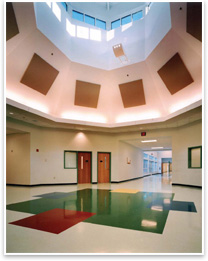
Summary: Greening America’s Schools, a national report released October 31, reveals that building energy-efficient schools results in lower operating costs, improved test scores, and enhanced student health. The AIA-sponsored report—produced by Capital E, a national clean energy technology and green building consulting firm—concludes that schools that are designed to be environmentally friendly would save an average of $100,000 each year. The report offers a detailed analysis of 30 green schools in 10 states built between 2001 and 2006. This sample demonstrates that the total financial benefits of green schools are 20 times greater than the initial cost and include energy and water savings and improved student health and test scores. With more than $35 billion projected to be spent in 2007 on K-12 construction, the conclusions of this report have far-reaching implications for future school design. “This study underscores the enormous cost of poor design and the critical impact that good design and operation has on the quality of our children’s education,” says AIA President Kate Schwennsen, FAIA. “The findings indicate that there are tremendous benefits from energy-efficient school design, not only from an economic standpoint, but from increased student test scores and far healthier environments through improved indoor air quality.” Great benefits, cost and otherwise
“More fiscally prudent and lower risk” Kats is the former director of finance for energy efficiency and renewable energy at the U.S. Department of Energy and has worked with dozens of corporations, developers, state agencies, and organizations to arrive at conservative cost/benefit comparisons of different environmental and building strategies. The report’s finding include:
One North Carolina school district experienced a 33 percent increase in the percentage of students testing at grade level for reading and math after moving to a green school. |
||
Copyright 2006 The American Institute of Architects. All rights reserved. Home Page |
||
news headlines
practice
business
design
recent related
› New Sidwell Middle School a Living Component to D.C. Campus
› Washington State Set to Implement Green Building Legislation
› Project FROG Leaps Ahead with High-Performance Modular Classrooms
Visit Capital E’s Web site for a downloadble PDF of the report.

 New Report Shows Green Schools Save Money, Energy; Promote Good Health
New Report Shows Green Schools Save Money, Energy; Promote Good Health